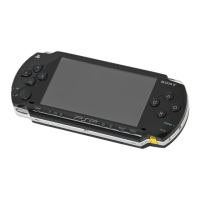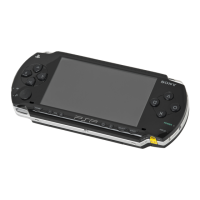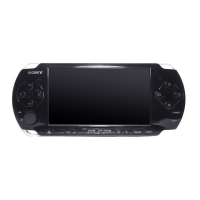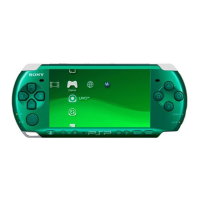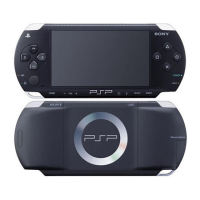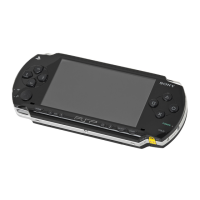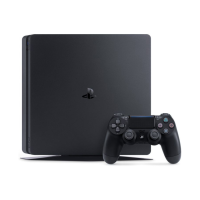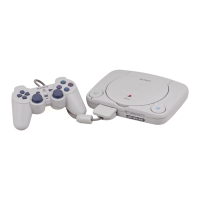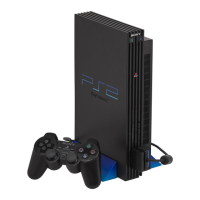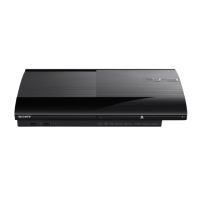Do you have a question about the Sony PlayStation PSP-1003 and is the answer not in the manual?
Avoid electrical shock; system is Class 1 Laser Product. Follow safety instructions.
Advice on eye strain, motion sickness, dizziness, and regulatory compliance.
Warning about flashing lights and repetitive motion injuries.
Guidance on headphone volume to protect hearing.
Basic operation starts from Home Menu; explains button functions.
Inspect cords, disconnect if abnormal, use in well-lit area, take breaks.
Precautions for damaged battery, avoiding fire, extreme temps, disassembly, liquids.
Verify all items are included in the PSP package.
Identifies buttons, sticks, indicators on the front of the PSP.
Step-by-step instructions on how to insert the battery pack.
Steps to connect the AC adaptor and plug into an outlet.
Turn on system and follow on-screen instructions for language, time, nickname.
Slide POWER/HOLD switch up to turn on the system.
Slide POWER/HOLD switch up to enter; slide up again to exit Sleep Mode.
Slide OPEN latch, insert UMD with label facing rear, close cover; slide latch to eject.
Open slot cover, press Memory Stick Duo until fully inserted; open cover to eject.
Slide POWER/HOLD switch down to lock buttons; HOLD indicator turns yellow.
Cycle tones, mute/unmute sound via sound button or volume buttons.
Press button for brightness levels; hold to turn off backlight.
How to interpret on-screen battery icons and estimate remaining power.
Select Game icon, insert UMD, press X to start; press HOME to quit.
Backup important data by copying or delete unwanted saved data.
Select Video icon, insert media, select icon, press X to play.
Press triangle to display controls; use icons for navigation, playback, and options.
Maps system buttons and remote controls for video playback functions.
Save videos from compatible devices or transfer from PC.
Select Music icon, insert media, select icon, press X to play.
Press triangle to display controls; use icons for navigation, playback, and options.
Maps system buttons and remote controls for music playback functions.
Select icon, press triangle to display options; select menu item, press X.
Steps to import music from audio CDs to Memory Stick Duo.
Select Photo icon, insert Memory Stick, select icon, press X to view.
Press triangle to display controls; use icons for send, wallpaper, view mode, display.
Set current image as wallpaper; overwrite existing if applicable.
Steps for sender and receiver to set up Ad Hoc mode for image transfer.
Select image folder, press START to begin; press circle to stop.
Save photos from digital camera or transfer from PC to Memory Stick Duo.
Overview of LocationFree Player, RSS Channel, and Internet Browser.
Ensure network settings, then use browser to navigate web pages.
Add RSS channels to access audio content; play streaming content.
Select Settings icon from Home Menu to adjust system features.
Covers Network Update, USB, Video, Photo, System, Theme, Date/Time, Power Save, Sound, Security, RSS, Network Settings.
Set UMD Video menu/audio/subtitle languages, volume, and L/R button functions.
Set slideshow speed to Fast, Normal, or Slow.
Change user nickname and set system menu language.
View battery charge level, hours left, power source, and status.
Format Memory Stick, activate WMA playback, Flash Player, or restore defaults.
Select background color, cycle colors, or set image as wallpaper.
Manually set date/time, sync via Internet, set time zone, and manage daylight saving.
Set automatic backlight turn-off time to conserve power.
Configure auto Sleep Mode and adjust wireless network power consumption.
Limit maximum volume and enable/disable confirmation sounds.
Steps to change the 4-digit password for security.
Set parental control level to restrict content based on age or rating.
Enable password prompt before starting Internet Browser.
Connect PSP to PC with USB cable for transferring files.
Configure direct PSP-to-PSP wireless communication.
Connect PSP to network/Internet using a WLAN access point.
Step-by-step guide to create and save a network connection.
Test the connection to the access point and confirm results.
Connect to network, download data, update system software.
Insert Memory Stick, connect AC adaptor, select Network Update, download data.
Overview of keyboard layout, function keys, cursor, and text entry.
Software updates include patches, settings, features; recommended to use latest version.
Download update data from the Internet using a PC.
Update system using a UMD disc containing update data.
Lists UMD, Memory Stick Duo, MagicGate, Memory Stick PRO Duo.
Details of adaptor, MagicGate technology, and parallel transfer.
Lists supported file formats for video, music, and photos.
Details on display, sound, disc drive, interface ports, codecs, power, dimensions, weight.
Technical details for UMD laser, wireless, AC adaptor, and battery pack.
Solutions for power not turning on, charging issues, and short battery life.
Solutions for backlight, dark screen, spots, and background color changes.
Solutions for no sound, poor quality, UMD recognition, and playback errors.
Solutions for insertion, recognition, and data save/load problems.
Solutions for video/music not playing or unrecognized data.
Solutions for photo issues and network connection failures.
Solutions for sound, remote, warm system, unresponsive buttons.
Solutions for static, no key tones, date reset, PC recognition, forgotten password.
Details of the one-year guarantee for defects in material and workmanship.
How to claim under guarantee, required proof of purchase, and exclusions.
| Model | PSP-1003 |
|---|---|
| Weight | 280 g |
| RAM | 32 MB |
| VRAM | 4 MB |
| Release Date | September 2005 |
| Dimensions | 170 mm × 74 mm × 23 mm |
| Display | 4.3 inches TFT LCD |
| Resolution | 480 × 272 pixels |
| CPU | 333 MHz MIPS R4000 |
| Storage | Memory Stick PRO Duo |
| Wireless | Wi-Fi 802.11b |
| Connectivity | USB 2.0 |
| Supported Media | UMD |
| Buttons | D-pad, face buttons, shoulder buttons |
| Colors | Black, White, Silver, Blue |
| Battery | Li-Ion 1200 mAh |
